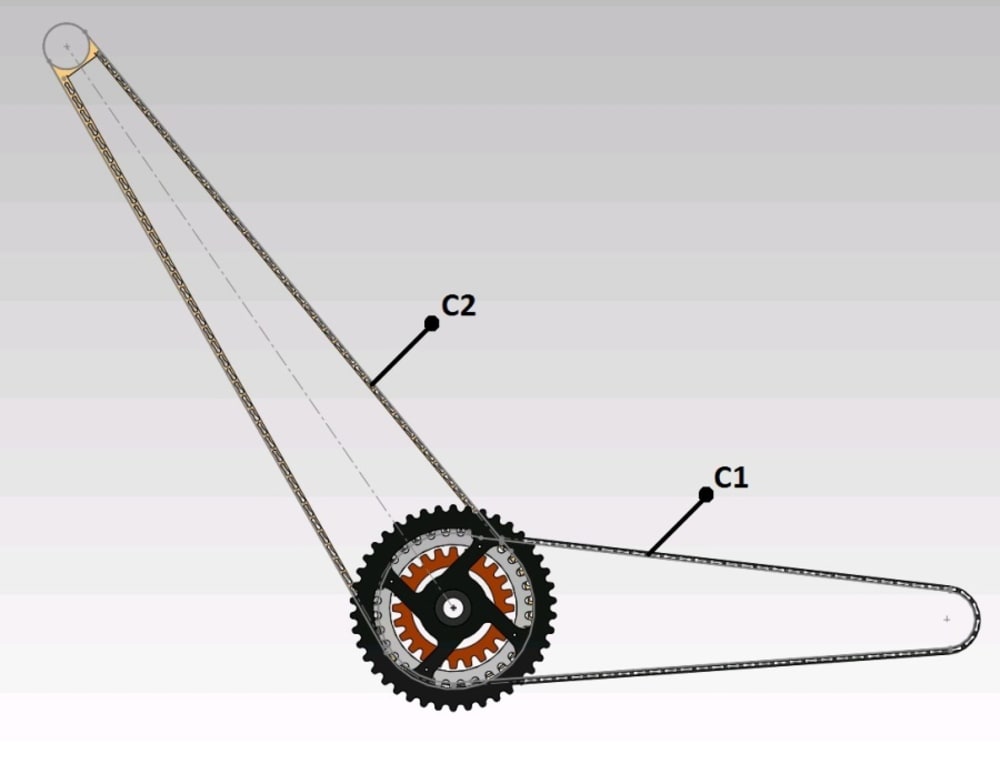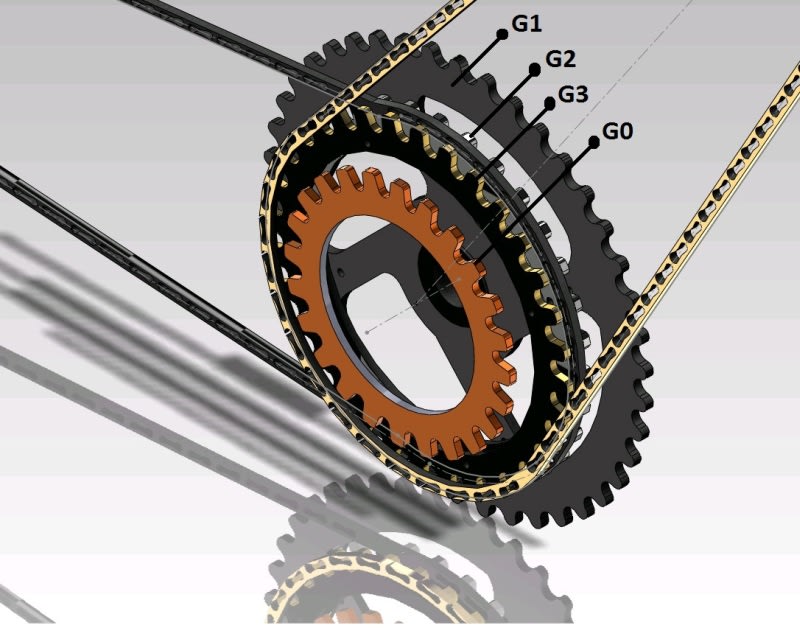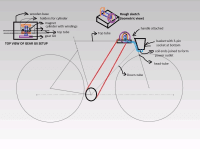Have you ever wondered how exciting it would be to generate power from our own bodies while staying healthy at the same time? Well, here comes the ‘E-Go’ bike. Call it eco-friendly or a generator, for us it is simply derived from the word ‘ego.’ E-go is an attempt to satisfy one’s ego wherein his/her energy usage is versatile.
E-go is a [2,2] gear bike by which one can generate enough power to charge carry-on gadgets like i-pod, cell-phone etc. while traveling. Couple of products like Hub dynamo, Bottle dynamo, and stationary power bikes were made for the same. The main advantage of the new ‘e-go’ design over others is that the bike can be changed to ‘power’ mode as per the rider’s choice and can be done so while traveling.
Chain-wheel comprises of 4 gears – [G1,G2] for speed and [G3,G0] for electricity (Specifications included at the end). Main-chain C1 connects G1/G2, using front derailleur, to rear-wheel cassette as in usual bikes. A second-chain C2 connects G3/G0, using added front derailleur at down-tube, to gear GX placed at the top-tube closer to the handle. G0 is the smallest gear and is meant for least power (Gear ratio of G0/GX ? 0.7). Such an arrangement is included because
(i) It takes extra pedal effort to simultaneously ride and generate power
(ii) There is resistance for the coil rotating in the magnetic field.
By electromagnetic induction principle,
voltage V = B*N*A
where B = (magnetic field strength)* (Rate of field change) [Tesla/sec]; N = number of coil winding; A = area of the coil [m2]
A cylinder of 10cm length and 35mm diameter is chosen as base for copper windings extending 8cm. Angular velocity of the coil depends on the rotation of GX gear driven by G3. Number of coil windings is chosen to be 160 of 0.5 mm thickness wire. Generally it requires an average of 5 volts to charge an i-phone.
For a magnet with 0.1 Weber strength, 0.1*(3.576/0.0175)*160*(0.08*0.035) ? 9 volts of power is generated when riding at 8 mph satisfying requirement even for an efficiency of 60%.
Entire setup of GX with coil windings is placed on top-tube. In order to compensate off-balance load due to gear GX, a heavier cylinder holder A is used. Also the magnet is placed at an off-set distance to GX. The two ends of the coil windings are joined to facilitate a 3-pin socket attached at the bottom of a polypropylene basket attached on head-tube at front. The whole power set-up is covered over with a plastic dome acting as a roof when raining (not shown in the pictures).
Hence the current design acts as an ‘alternative’ means of powering pocket gadgets that became part of one’s life while improving health conditions of the individual by cycling.
*Specifications: G1 (44 teeth) – 150 mm BCD; G2 (32 teeth) – 110 mm BCD; G3 (32 teeth) – 110 mm BCD; G0 (16 teeth) - 50mm BCD, GX (24 teeth) – 70 mm.
Like this entry?
-
About the Entrant
- Name:Ravi Vedula
- Type of entry:teamTeam members:Vamshi Krishna Regalla
- Software used for this entry:SOLIDWORKS
- Patent status:none








